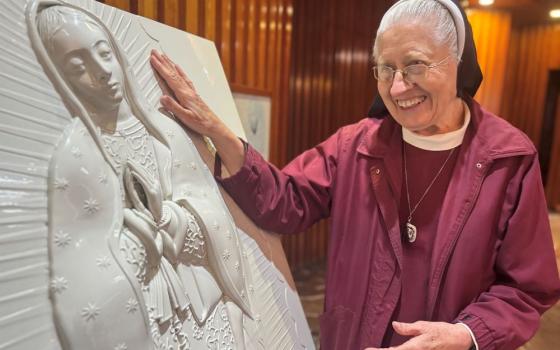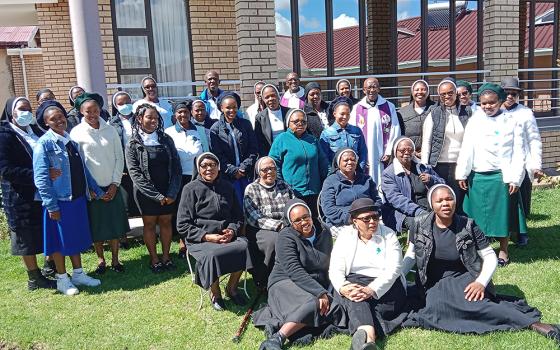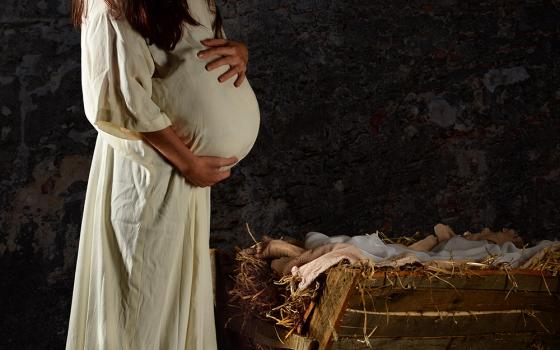
(Unsplash/Anna Docking)
"The bride of Christ" was one of the titles given by the fathers of the early Christian church to the church itself and, by extension, to the virgin martyrs. As various forms of dedication evolved, it was embraced by many, though not all, groups of women and sometimes by men too. However, these titles had various theological underpinnings and nuances. Were they always sound and healthy?
Almost all major religions that believe in God metaphorically depict the soul as being espoused to God; no other relationship could better describe the mystery of union with Divinity. Thus, we see how the Jews in the Old Testament have a covenantal, spousal relationship with Yahweh. Moreover, the people of God are likened to a virgin (Isaiah 62:5; Amos 5:2) who becomes a prostitute by worshiping idols (Jeremiah 3) and being unfaithful to Yahweh.
Similarly, the New Testament reveals Jesus as bridegroom to the community of disciples; the church is his bride (Ephesians 5:23-32; Revelation 19:7-9; 21:2-3,9). Furthermore, the early Christian community was described as a virgin because it believed in the resurrection of Christ and refused to offer incense to the emperor. It desired to keep the faith whole and entire.
When a Christian virgin decided to remain unmarried (loving and following Christ and his teachings even to the extent of having to embrace martyrdom), she too seemed to reflect the church community's integrity of faith. However, virginity for the sake of the kingdom of heaven (Matthew 19:12) assumed several understandings in the variety of local churches in the East and West.
Possibly, if the virgins in one diocese stressed their intimate spousal relationship with the risen Lord, in another diocese, they focused on the futility of married life while awaiting the second coming of Christ. In yet another local church, they felt celibacy helped them to be more available and freer to serve others.
Thus, we see how the Holy Spirit inspired them to remain unmarried with a variety of motivations. Seeing all this, the elders conferred upon such individuals the title of the church as virgin-bride of Christ-mother. They served the church and society through prayer, penance, pastoral works of mercy, and according to each one's own spiritual gifts.

(Unsplash/Tom Pumford)
However, their attire, consecrated lifestyle, and evangelical witness were deeply rooted in their cultural milieus and contextualized according to the needs of their own local church communities and house churches. They weren't seen as singles or spinsters but as women who transcended themselves in loving union with Christ and total dedication to the service of their church community. Some continued to live with their families, while others formed communities of virgins.
So we see how the bride of Christ motif in the lives of early Christian virgins was directly connected with the church's identity. It was theologal (baptismal) rather than theogamic (marriage with divinity). However, it gradually assumed newer and deeper meanings. Origen of Alexandria (A.D. circa 185-254), who died due to injuries suffered during the Decian persecution, promoted spousal mysticism akin perhaps to that among ascetics of other religions.
The fourth-century reign of Constantine (A.D. after 280-337) brought peace that seemed to water down the originality of the faith as Christianity became a state religion, and persecution ceased. The second coming of Christ did not happen as expected, and the movement previously called "The Way" became settled and organized. This vocation of virgins became sacramentalized through consecration conferred by the bishop on his spiritual daughters. However, some Christians who missed the zeal of the martyrs wanted to battle against the forces of evil through celibate lives of prayerful solitude and asceticism to escape worldly temptations.
A variety of ascetic practices emerged in the desert and caves on the outskirts of towns and cities, which were similar to martyrdom. Thus, the sacred became separated from the secular. They tended to be individualistic, thus giving rise to eremitic or hermit life. However, since this could lead to mental health issues, they started coming together at times. Thereafter, cenobitic monasteries that stressed "organized" community living with a common rule gradually emerged under St. Pachomius (A.D. circa 290-346) and formed federations.
As not all women hermits embraced this kind of bridal mysticism, the option was private and not necessarily their primary identity or charism as it was for the order of virgins in dioceses. The title "bride of Christ" was not liturgically conferred upon them until Benedictine monasteries emerged in the early sixth century and integrated the rite of consecration of virgins with the monastic profession. Over the centuries, it was conferred only in some monasteries with solemn vows and later replaced by the religious profession of simple vows as we see today.
Advertisement
Reviewing these historical developments (cf. Ecclesiae Sponsae Imago), I wonder whether church elders had political motivations in conferring the title of the church as virgin-bride-mother upon feminist virgins to domesticate, control or protect them from social pressures. Their resolve to remain virgins was like an affront to the patriarchal context where women were expected to get married and bear children. Since the consecration was irrevocable, they couldn't be forced into matrimony.
Of course, this was long before alternative forms of community like monasteries and convents emerged over the millennia, each with a variety of charisms, as their founders read the signs of the times. Especially during the Middle Ages, St. Bernard of Clairvaux's Commentary on the Song of Songs had an even greater impact on spousal spirituality. Several women mystics like Sts. Bridget of Sweden and Teresa of Ávila emphasized it.
Since the spirituality appealed to those who were professed but not consecrated as virgins, the revised rite of religious profession in 1970 provided thematic options for the perpetual profession of women, one of which incorporated spousal spirituality. According to its introduction, "This leads to the grace of baptism achieving richer results in them." Thus, there have been several paradigms of total self-giving to Christ in the church.
Sentimentality plays a significant role in attracting women to become brides of Christ and either remain faithful to their commitment because of this spirituality, or fall into unhealthy relationships, especially with male celibates, due to ignorance or manipulation. Such scandalous partnerships drew a lot of criticism in patristic texts.
Nuptial imagery continues to draw vocations to institutes that embrace this spirituality. However, my interactions during the first phase of consultations for the synod on synodality revealed that a significant number of consecrated virgins, as well as religious women, do not see themselves only as brides of Christ.
Many see Christ related to them in other ways too, such as their father, brother, child, friend, or teacher, to name a few. Some feel called to be "another Christ." Isn't that what mystical union with Christ does? In relatively younger churches in Asia and Africa, some see their relationship with Christ as encompassing and fulfilling all relationships. The reasons for these changes in theological emphases could be cultural and due to the abuse of vulnerable women around the world.
As consecrated life moves towards a newer future, it is important to give the motif of the "image of the church as bride of Christ" further reflection. However, we must remember that we are humans first and foremost. It is also important to differentiate the concept of in persona Christi from spousal spirituality, as some clergy misuse the two. After all, Jesus Christ is risen and alive. Why should any Christian need another Christ as a bridegroom?






